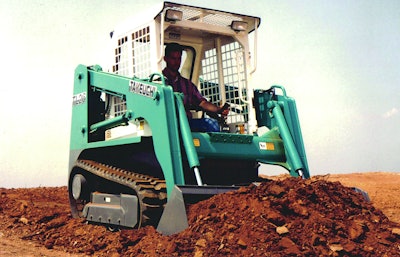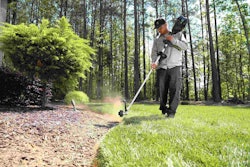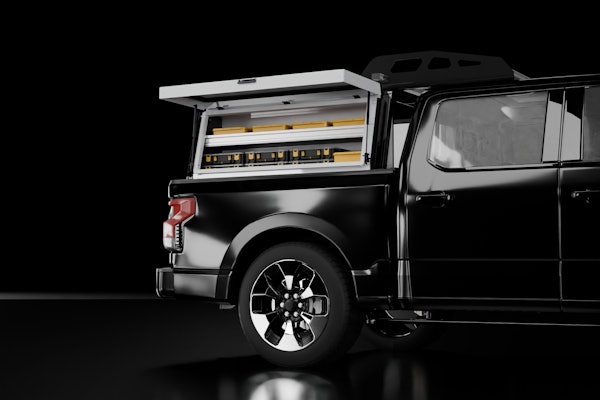 Takeuchi is credited with the world’s first CTL in 1986. The TL10 was first introduced in 1986 and then evolved into the TL26, which was brought to market in 1991.
Takeuchi is credited with the world’s first CTL in 1986. The TL10 was first introduced in 1986 and then evolved into the TL26, which was brought to market in 1991.Photo: Takeuchi
The main driver for innovation is the need for greater efficiency, and the compact track loader (CTL) was likewise born out of a need for increased productivity.
Before the compact track loader, there was only the skid steer loader (SSL), which has improved workloads drastically since its creation in 1956.
The first skid steer was a far cry from what it has become today. Originally, it was a three-wheeled loader built by brothers Louis and Cyril Keller for a turkey farmer named Eddie Velo, who was struggling with clearing out his barns of manure.
A rear axle was introduced in 1960 and in 1962 the first Bobcat-branded skid steer loader, the M440, was introduced.
It wasn’t until 1986 that manufacturer Takeuchi introduced the world’s first compact track loader.
“CTLs were introduced to the market to overcome some of the limitations that wheeled skid steers have with multi-terrain use in muddy conditions,” says Lee Padgett, a product manager for Takeuchi. “Tracks allow for a much more stable platform with better flotation and traction.”
Takeuchi’s TL10 was used for market development and testing and then the TL26 was brought to market in 1991. Around the same time period, ASV was also working on a compact track loader and introduced its first Posi-Track rubber track loader in 1990.
According to ASV’s website, the MD-70 combined the power of a steel track dozer with the versatility of a loader-mounted quick-coupler and put it all on a rubber track undercarriage.
Although Takeuchi is no rookie when it comes to creating new machinery for the landscape industry, as it also built the first compact excavator in 1970, it still took roughly seven years to complete market development and testing.
“Thoughtful product development takes time and it was critical that we involved many of our compact customers in the evaluation of the track loader as it evolved from initial design,” Padgett says. “We have always been a customer driven company and learned early on that customer input is key to success in product development.”
One of the biggest challenges the company faced in creating the first compact track loader was developing pilot operated joystick controls for the loader, bucket and travel functions.
According to Padgett, the initial design used mechanical linkage that was hard to use and had issues with durability. Takeuchi’s engineering team ended up focusing on incorporating the same pilot operated joystick control technology used in its excavator line.
“This took some time, but the end result has provided the ease of operation, durability and sound functionality that our customers expect from our compact track loader products,” Padgett says. “Another challenge was wear on the sprockets and drive motors. It didn’t take our engineers long to realize that we needed to elevate these components in order to increase the durability and reduce wear in this critical area.”
Since its introduction, compact track loaders have proceeded to surpass skid steers in sales.
“Landscaping was a lot more dependent on weather conditions due to the limitations of the SSL to work in soft ground and on slopes,” Padgett says. “The CTL completely changed that, and productivity increased immediately.”
The shift to compact track loaders is mostly based on application and certain regions.
“The opportunity to use the CTL in multi-terrain applications while operating a wide variety of hydraulic attachments makes the CTL a very versatile and attractive platform to many operators that may have used skid steers in the past for the same applications,” Padgett says. “The added traction effort over a skid steer allows a compact track loader to perform well in excavating and grading applications, much like a small dozer. The functionality of an SSL combined with the pushing power of a small dozer makes for a very effective machine on all jobsites.”
States like California, Texas and Florida, which feature softer soil conditions, are some of the areas where compact track loader growth is continuing.
Yet while skid steers sales may have decreased, there is still a place for both of these machines in a landscaper’s fleet.
Both machines can handle excavating, grading, site development, demolition, erosion control and concrete and asphalt paving. So selecting the right machine often boils down to niche details like distances generally covered, desired ground pressure and budgetary concerns.
For landscapers working mostly in dirt and on established lawns, a compact track loader might be the best option when choosing between the two machine types, as its larger ground-to-surface contact minimizes ground disturbance.
Many landscapers choose skid-steer loaders because they provide several benefits, mainly being able to perform a wide range of jobs, handle a large range of attachments and travel quickly between jobsites. They also tend to be far cheaper than CTLs.
Yet manufacturers argue that while CTLs are more expensive, the increased performance and productivity make it easy to recuperate the cost.
They advise asking yourself questions such as ‘What types of conditions do I operate most of the time?’ and ‘Will adding a compact track loader allow me to work in all types of conditions and provide the opportunity to work on jobs that were previously beyond my capabilities?’
Once you’ve answered those questions, you’ll have a good idea if a compact track loader is worth the additional expense.









